
Find Help
More Items From Ergsy search
-

Do all mutations in the virus lead to new variants?
Relevance: 100%
-
New Covid Variant Strains
Relevance: 71%
-

Are new variants more transmissible?
Relevance: 69%
-
How often do new COVID-19 variants emerge?
Relevance: 67%
-
Do new variants affect COVID-19 testing?
Relevance: 66%
-

Can new variants cause reinfection?
Relevance: 66%
-

Are new COVID-19 variants more dangerous?
Relevance: 65%
-

Should I be worried about new variants?
Relevance: 64%
-
What is the process to identify a new Covid-19 variant?
Relevance: 61%
-

How do scientists name new Covid-19 variants?
Relevance: 59%
-
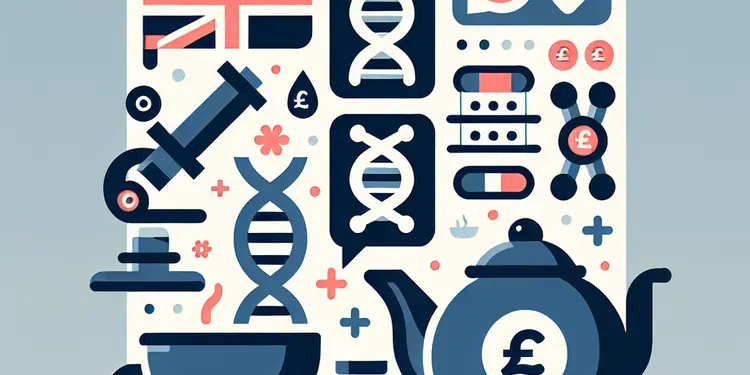
Is there concern about new hypothetical variants like Nimbus and Stratus?
Relevance: 59%
-

Do vaccines work against new COVID-19 variants?
Relevance: 59%
-
What is a COVID-19 variant?
Relevance: 59%
-
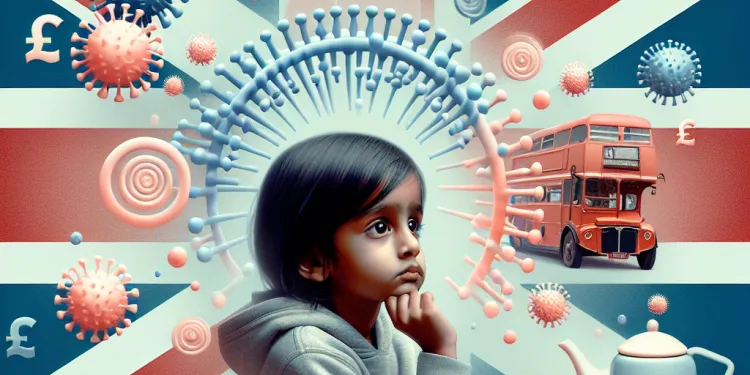
Are children more affected by new variants of COVID?
Relevance: 58%
-
How do COVID-19 variants arise?
Relevance: 58%
-

Why do some variants spread more easily?
Relevance: 55%
-
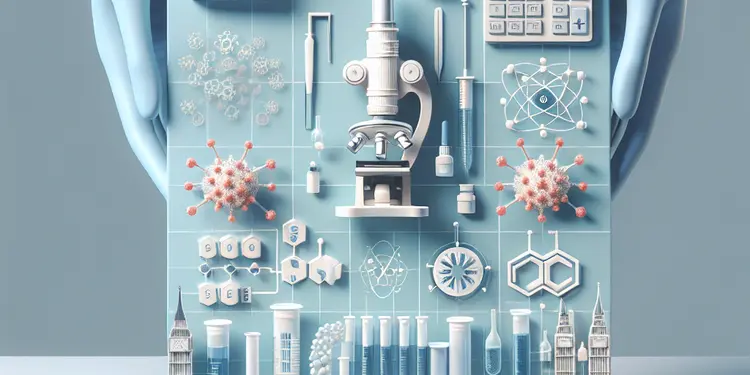
Has research been conducted on the Nimbus variant?
Relevance: 55%
-
How are COVID-19 variants detected?
Relevance: 53%
-
What is the Covid-19 Stratus variant?
Relevance: 51%
-
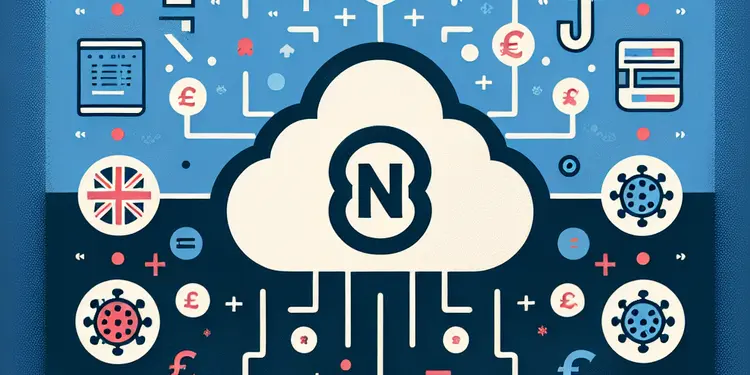
Is the Nimbus variant more contagious?
Relevance: 51%
-

What are the Nimbus and Stratus variants of Covid?
Relevance: 50%
-

How can I protect myself from new COVID-19 variants?
Relevance: 50%
-

Are there protocols for handling hypothetical variants?
Relevance: 44%
-

What impact could a variant like Stratus have if real?
Relevance: 44%
-

Do vaccines protect against the Stratus variant?
Relevance: 41%
-

How can I protect myself from Covid-19 variants?
Relevance: 40%
-
Where can I learn about real Covid-19 variants?
Relevance: 40%
-

What would happen if the Nimbus variant existed?
Relevance: 37%
-

Can hypothesized variants be used in scientific modeling?
Relevance: 34%
-

Have there been fictional variants used in media discussions before?
Relevance: 30%
-

Are the Nimbus and Stratus variants officially recognized?
Relevance: 30%
-

Are new emerging pathogens a risk for blood safety?
Relevance: 27%
-

What is the new treatment for hepatitis C like?
Relevance: 25%
-
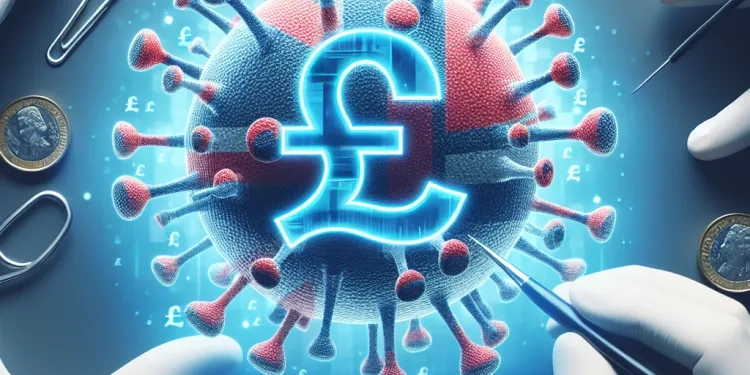
Is the Marburg virus related to the Ebola virus?
Relevance: 25%
-

Is there a cure for Nipah Virus?
Relevance: 25%
-
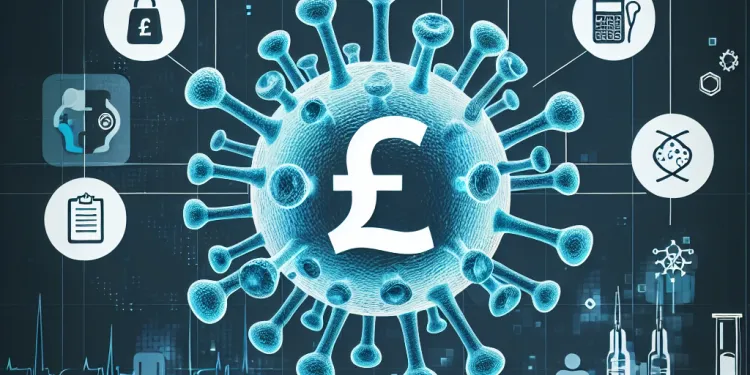
What is Nipah Virus?
Relevance: 25%
-
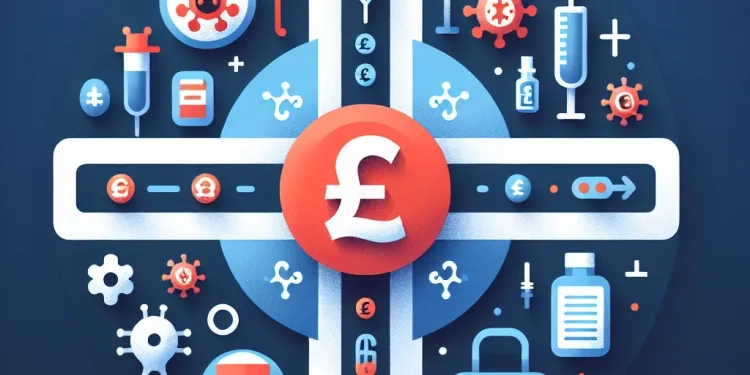
What is the Ebola virus?
Relevance: 24%
-
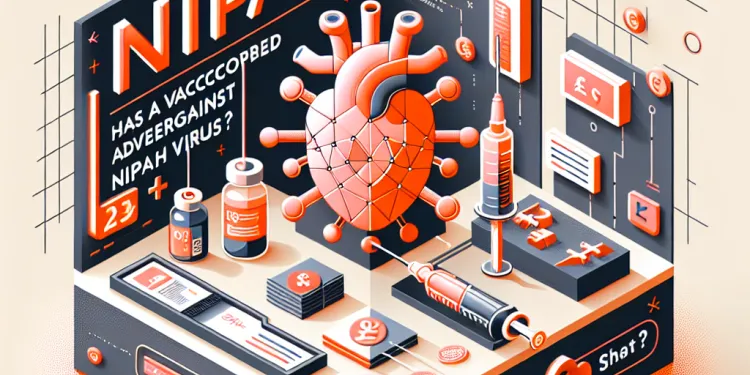
Has a vaccine been developed against Nipah Virus?
Relevance: 24%
-
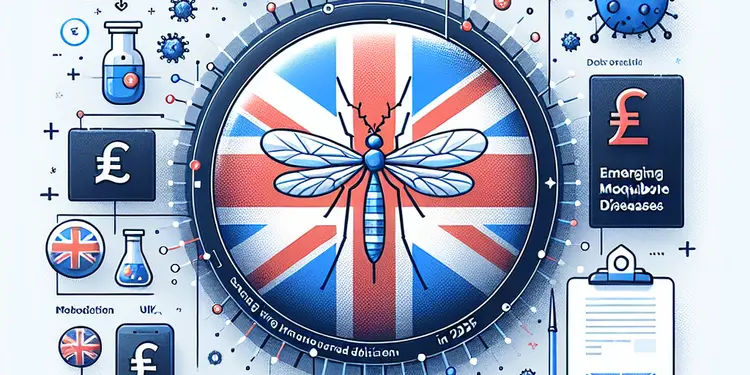
Are there any new mosquito-borne diseases emerging in the UK in 2025?
Relevance: 23%
-
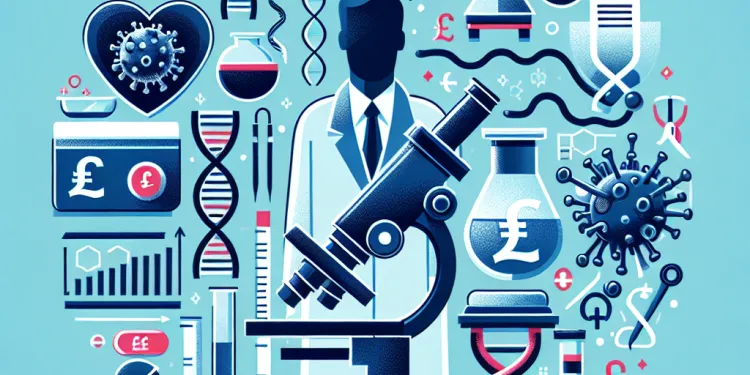
What research is being done on the Marburg virus?
Relevance: 23%
Understanding Virus Mutations
Viruses, including those that cause illnesses in humans, such as COVID-19, are constantly undergoing changes. These changes, known as mutations, occur when the virus replicates. Mutations are alterations in the genetic material of the virus, and they can result from errors in the replication process or due to interactions with the host's immune system. It's important to understand that not all mutations have a significant impact on the virus or its behavior.
Mutations vs. Variants
Not every mutation in a virus leads to the development of a new variant. A variant, in the context of viral infections, is a version of the virus that has undergone enough mutations to set it apart from other variants. These changes might affect how the virus behaves, spreads, or responds to vaccines. However, the vast majority of mutations do not significantly alter the virus's characteristics. Many mutations are simply neutral or even detrimental to the virus, causing it to become less effective.
Criteria for a New Variant
For a collection of mutations to be classified as a new variant, it must typically show differences in key aspects compared to the original virus. These aspects can include a change in transmissibility, the disease severity it causes, the way it interacts with diagnostics, treatments, or vaccines, or its ability to evade the immune system. Only when these changes have a functional impact and the virus with these changes starts spreading within a population is it often classified as a new variant.
The Role of Surveillance
Continuous monitoring of viral mutations through genomic surveillance is crucial. Public health agencies worldwide, including those in the UK, use genomic sequencing to track changes in the virus. This helps scientists to observe any emerging patterns that could signal the development of a significant new variant. If a mutation or set of mutations begins to spread more rapidly within the population, it can be identified quickly, and appropriate measures can be taken to understand and mitigate its impact.
Conclusion
In summary, while all variants result from mutations, not all mutations give rise to new variants. The majority of mutations are temporary or inconsequential. Only a subset of mutations that confer a survival advantage or impact how the virus interacts with hosts and the environment become noteworthy variants. Public health efforts focus on monitoring these changes to respond effectively and protect the health of the population.
Understanding Virus Mutations
Viruses can change over time. A virus like COVID-19 can change when it makes copies of itself. These changes are called mutations. A mutation happens in the virus's genetic material. Sometimes the virus makes a mistake when copying itself. Other times, the virus changes because of the body's immune system. Not all changes are important or make the virus different.
Mutations vs. Variants
Not every change in a virus makes it a new version. A variant is a new version of the virus. It happens when the virus changes a lot. These changes can make the virus act differently. It might spread faster or affect vaccines. But most changes don't make the virus different. Some changes even make the virus weaker.
Criteria for a New Variant
For changes to make a new variant, the virus must act differently. This can mean it spreads faster, makes people sicker, or acts differently with medicines or vaccines. If these changes are important and the virus spreads, it is called a new variant.
The Role of Surveillance
Watching for virus changes is very important. Health agencies around the world do this, like in the UK. They look at the virus's genes to see changes. This helps them find new variants quickly. They can then take steps to keep people safe.
Conclusion
To sum up, all new virus versions come from changes, but not all changes make new versions. Most changes don't matter much. Only some changes that help the virus survive or change how it acts are important. Health officials watch for these changes to keep the population healthy.
Frequently Asked Questions
Do all mutations in a virus lead to new variants?
Not all mutations in a virus result in new variants. Many mutations may not significantly alter the virus's characteristics and thus do not constitute a new variant.
What determines if a mutation leads to a variant?
A mutation may lead to a new variant if it affects the virus's transmissibility, virulence, or immune escape properties.
Can a virus have many mutations without becoming a new variant?
Yes, a virus can accumulate many mutations that do not significantly change its properties, and thus it does not become a new variant.
Why do some mutations lead to variants while others do not?
The impact of a mutation on the virus depends on where it occurs in the viral genome and what functions it affects. Some changes might have negligible effects, while others have a significant impact.
What is the difference between a mutation and a variant?
A mutation is a change in the virus's genetic code, while a variant is a virus with a set of mutations that alter its behavior compared to the original virus.
How do scientists determine when a new variant has emerged?
Scientists monitor viral mutations using genomic sequencing and assess changes in virus characteristics to determine if a new variant has emerged.
Do all variants behave differently than the original virus?
Not all variants show significantly different behavior from the original virus; some may be very similar in how they spread and affect hosts.
Why are some variants more concerning than others?
Variants can be concerning if they lead to increased transmissibility, more severe disease, or decreased effectiveness of current vaccines and treatments.
Are new variants always more dangerous?
Not necessarily. Some new variants may spread more easily but cause less severe disease, while others might have little to no change in risk.
How quickly do new variants of a virus typically emerge?
The emergence of new variants depends on several factors, including the virus's mutation rate and the level of viral transmission in the population.
What role does natural selection play in the emergence of new variants?
Natural selection can favor variants that have a competitive advantage (e.g., higher transmissibility), allowing them to spread more widely.
Can human behavior influence the emergence of new variants?
Yes, human behavior, such as adherence to public health measures, can influence the rate of viral transmission and the emergence of new variants.
Why is genomic surveillance important in tracking virus variants?
Genomic surveillance helps identify and monitor the spread of virus variants, informing public health responses and vaccine updates.
How do vaccines impact the development of virus variants?
Vaccines can reduce the spread of the virus, which in turn lowers the chances of mutations occurring and new variants developing.
Are certain viruses more prone to mutations and variants?
Yes, viruses like RNA viruses tend to mutate more rapidly than DNA viruses due to less proofreading during replication.
How does the mutation rate of a virus affect public health strategies?
A high mutation rate may necessitate more frequent updates to vaccines and ongoing public health measures to control spread.
Can antiviral treatments drive the emergence of new variants?
If not used properly, antiviral treatments can apply selective pressure on a virus, potentially leading to the emergence of resistant variants.
What is the difference between a strain and a variant?
A strain typically refers to a version of a virus that shows distinct properties and causes clinical effects, whereas a variant may have genetic differences but not distinct clinical properties.
Are all virus changes tracked by scientists?
Scientists track changes in viruses that are most likely to affect its behavior or have significant public health implications.
Can public health measures stop new variants from emerging?
While public health measures can't completely stop new variants from emerging, they can slow viral spread and reduce the chances of significant variants developing.
Do all changes in a virus lead to new types?
A virus can change in small ways. We call these changes "mutations".
Not every change makes a new type of virus.
Tools to help:
- Draw pictures of what happens when a virus changes.
- Use colored blocks to show different types of viruses.
Not every change in a virus makes a new type. Lots of changes don't make the virus different in important ways, so they are not a new type.
How do we know if a change in genes makes a new type?
A mutation is a change in a virus. This change can make a new version of the virus.
The new version might spread more easily, be more dangerous, or avoid being stopped by our immune system.
Can a virus change a lot without becoming a new kind?
Yes, a virus can change, or mutate, many times. But it does not always become a new kind or variant.
Mutations are like small changes in the virus. These changes happen naturally.
A virus may need many changes before it is called a new kind or variant.
Tools like picture books and reading apps can help understand more.
Yes, a virus can change a lot, but these changes might not make it very different. It might not turn into a new kind of virus.
Here are some tips to help understand:
- Read one sentence at a time.
- Use a dictionary to look up hard words.
- Ask someone to help if it is still confusing.
Why do some changes in genes make new versions and others don't?
Genes have instructions for our bodies.
Sometimes, changes happen in these instructions. These changes are called mutations.
These changes can make new versions, called variants, if they affect how the body works.
If the change is small and doesn't do anything big, it might not make a new version.
If you want to know more about this, you can use drawings, videos, or ask a teacher for help.
How a change in the virus affects it depends on where the change happens and what it does. Some changes don't matter much. Other changes can be very important.
Tips to help you:
- Read slowly and take your time.
- Use a dictionary to look up hard words.
- Ask someone to explain if you're stuck.
- Use apps that help make reading easier.
What is the difference between a mutation and a variant?
A mutation is a change or error in the DNA. It happens when the DNA makes a little mistake. Mutations are like spelling mistakes in the instructions for the body.
A variant is a new type of a virus or organism that happens because of mutations. So, when the DNA changes, it can make a virus a bit different. This new, different virus is called a variant.
To help understand better, you can use:
- Pictures or videos that show how DNA changes.
- Talking with a teacher or helper to explain more.
- Using simple words to think about DNA as a list of instructions for making things in our bodies.
A mutation is when the virus's instructions change. A variant is a new type of the virus with changes that make it act differently than the first virus.
How do scientists know there is a new virus type?
Scientists watch how viruses change by looking at their genes. They check if these changes make a new version of the virus.
Do all virus variants act differently from the first virus?
Some new types of the virus are not very different from the first virus. They spread in the same way and make people feel the same.
Why are some virus changes more worrying?
Some viruses change and become new versions. These are called variants.
Some variants spread more easily. This means they can make more people sick.
Some variants can make people sicker than others.
If a variant can do these things, it is more concerning.
Reading tip: Use a reading app or ask someone to help you if you find it hard to understand.
New types of a virus can be worrying. This is because they might spread faster, cause worse sickness, or make vaccines and medicines less effective.
Are new versions of the virus always worse?
No, not always. Some new types of the virus can spread faster but make people less sick. Other new types might not change how risky they are at all.
How fast do new types of a virus appear?
Viruses can change and make new types. This happens at different speeds for different viruses. Some viruses change fast, while others take longer.
If you want extra help to understand how viruses change, you can use pictures or videos. These show how new types appear in an easy way.
New types of a virus happen because of a few things. It changes when it copies itself, and how fast it spreads among people makes a difference.
How does natural selection help new types of living things appear?
Natural selection helps some plants and animals. If they can pass something on better, they do well. These strong ones can then grow or spread more.
Can the way people act change the way viruses behave?
Can what we do make new types of viruses appear?
When we get sick, viruses can change. Are these changes caused by how people act?
Simple tools like pictures, videos, and audio can help explain this better.
Yes, what people do, like following health rules, can change how fast a virus spreads and how new versions of the virus appear.
Why do we watch virus changes?
It helps us see new virus types. Watching can keep people safer.
Watching the virus's genes helps us see how it changes and spreads. This helps health workers and scientists make better plans to keep everyone safe and update vaccines.
How do vaccines affect how viruses change?
Vaccines help protect us from viruses. Viruses like to change so they can spread more easily. These changes are called "variants." Here is how vaccines help with virus changes: - **Stop the virus from spreading:** Vaccines can stop viruses from spreading. This means fewer chances for the virus to change. - **Make the virus weaker:** If a virus does change, vaccines can help make it less harmful. Tools to help understand: - **Picture books**: Look for picture books about how vaccines work. - **Videos for kids**: Watch videos that explain viruses and vaccines in simple ways. - **Talk to a grown-up**: If you have questions, ask a grown-up to help explain.Vaccines help stop the virus from spreading. This means the virus changes less and new versions of it are less likely to happen.
Do some viruses change more than others?
Yes, viruses can change quickly. RNA viruses change faster than DNA viruses because they don't have a checking system when they copy themselves.
How do changes in a virus affect health plans?
Viruses can change over time. These changes are called mutations.
When a virus changes a lot, doctors and scientists need to change their plans to keep people safe.
Here’s how changes in viruses can affect health plans:
- If a virus changes, it can make people sick in new ways. This means doctors might need different medicines.
- Vaccines might need updates to work better against the new version of the virus.
- Health experts need to watch the virus closely to see how it changes.
Helpful tools and tips:
- News and Alerts: Check trusted sources for updates on viruses.
- Ask Questions: Talk to doctors if you have questions about viruses and health plans.
- Stay Informed: Learn simple facts about viruses to stay safe.
If the virus changes a lot, we might need to change vaccines more often. We also need to keep doing things that help stop people from getting sick.
Can medicines for viruses create new types of viruses?
Some medicines help us fight viruses, like the flu or COVID. But sometimes these medicines might make the virus change. A changed virus is called a "new variant." New variants can sometimes be stronger or different.
To understand better, use tools that help you read, like audiobooks or reading apps. If you find reading hard, you can also ask someone to read with you.
When we do not use antiviral medicines the right way, it can make the virus change. This may help the virus become stronger against the medicines.
What is the difference between a strain and a variant?
A strain is a type of virus or bacteria that can make people sick. Think of it like different flavors of ice cream.
A variant is a new version of that virus or bacteria. It's like when the ice cream has new toppings.
Both strains and variants can cause illness, but they might act in slightly different ways.
To help understand better, you can use pictures or drawings. You can also talk with someone you trust if you have questions.
A strain is a type of virus that acts differently and can make you feel sick in a different way. A variant is a type of virus that looks a bit different on the inside, but it might not make you feel sick in a new way.
Do scientists watch all virus changes?
Scientists look at many virus changes, but not all of them. Viruses change a lot, so it is hard to see every change.
Helpful Tip: Use pictures and videos about viruses to understand more.
Scientists watch how viruses change.
They look for changes that might make people sick or change how the virus acts.
Can rules help stop new sicknesses from appearing?
New sicknesses can come if germs change. Here are some ways to help stop them:
- Wash your hands often.
- Wear a mask if needed.
- Get vaccines or boosters.
- Stay away from crowds if you are sick.
These steps can keep everyone safer. Try using pictures or simple guides to remember these steps.
Public health rules can't stop new virus types from appearing, but they can slow down the spread. This way, there's less chance of important new virus types developing.
Useful Links
- Ergsy carfully checks the information in the videos we provide here.
- Videos shown by Youtube after a video has completed, have NOT been reviewed by ERGSY.
- To view, click the arrow in centre of video.
- Most of the videos you find here will have subtitles and/or closed captions available.
- You may need to turn these on, and choose your preferred language.
- Go to the video you'd like to watch.
- If closed captions (CC) are available, settings will be visible on the bottom right of the video player.
- To turn on Captions, click settings .
- To turn off Captions, click settings again.
More Items From Ergsy search
-

Do all mutations in the virus lead to new variants?
Relevance: 100%
-
New Covid Variant Strains
Relevance: 71%
-

Are new variants more transmissible?
Relevance: 69%
-
How often do new COVID-19 variants emerge?
Relevance: 67%
-
Do new variants affect COVID-19 testing?
Relevance: 66%
-

Can new variants cause reinfection?
Relevance: 66%
-

Are new COVID-19 variants more dangerous?
Relevance: 65%
-

Should I be worried about new variants?
Relevance: 64%
-
What is the process to identify a new Covid-19 variant?
Relevance: 61%
-

How do scientists name new Covid-19 variants?
Relevance: 59%
-

Is there concern about new hypothetical variants like Nimbus and Stratus?
Relevance: 59%
-

Do vaccines work against new COVID-19 variants?
Relevance: 59%
-
What is a COVID-19 variant?
Relevance: 59%
-

Are children more affected by new variants of COVID?
Relevance: 58%
-
How do COVID-19 variants arise?
Relevance: 58%
-

Why do some variants spread more easily?
Relevance: 55%
-

Has research been conducted on the Nimbus variant?
Relevance: 55%
-
How are COVID-19 variants detected?
Relevance: 53%
-
What is the Covid-19 Stratus variant?
Relevance: 51%
-

Is the Nimbus variant more contagious?
Relevance: 51%
-

What are the Nimbus and Stratus variants of Covid?
Relevance: 50%
-

How can I protect myself from new COVID-19 variants?
Relevance: 50%
-

Are there protocols for handling hypothetical variants?
Relevance: 44%
-

What impact could a variant like Stratus have if real?
Relevance: 44%
-

Do vaccines protect against the Stratus variant?
Relevance: 41%
-

How can I protect myself from Covid-19 variants?
Relevance: 40%
-
Where can I learn about real Covid-19 variants?
Relevance: 40%
-

What would happen if the Nimbus variant existed?
Relevance: 37%
-

Can hypothesized variants be used in scientific modeling?
Relevance: 34%
-

Have there been fictional variants used in media discussions before?
Relevance: 30%
-

Are the Nimbus and Stratus variants officially recognized?
Relevance: 30%
-

Are new emerging pathogens a risk for blood safety?
Relevance: 27%
-

What is the new treatment for hepatitis C like?
Relevance: 25%
-

Is the Marburg virus related to the Ebola virus?
Relevance: 25%
-

Is there a cure for Nipah Virus?
Relevance: 25%
-

What is Nipah Virus?
Relevance: 25%
-

What is the Ebola virus?
Relevance: 24%
-

Has a vaccine been developed against Nipah Virus?
Relevance: 24%
-

Are there any new mosquito-borne diseases emerging in the UK in 2025?
Relevance: 23%
-

What research is being done on the Marburg virus?
Relevance: 23%


